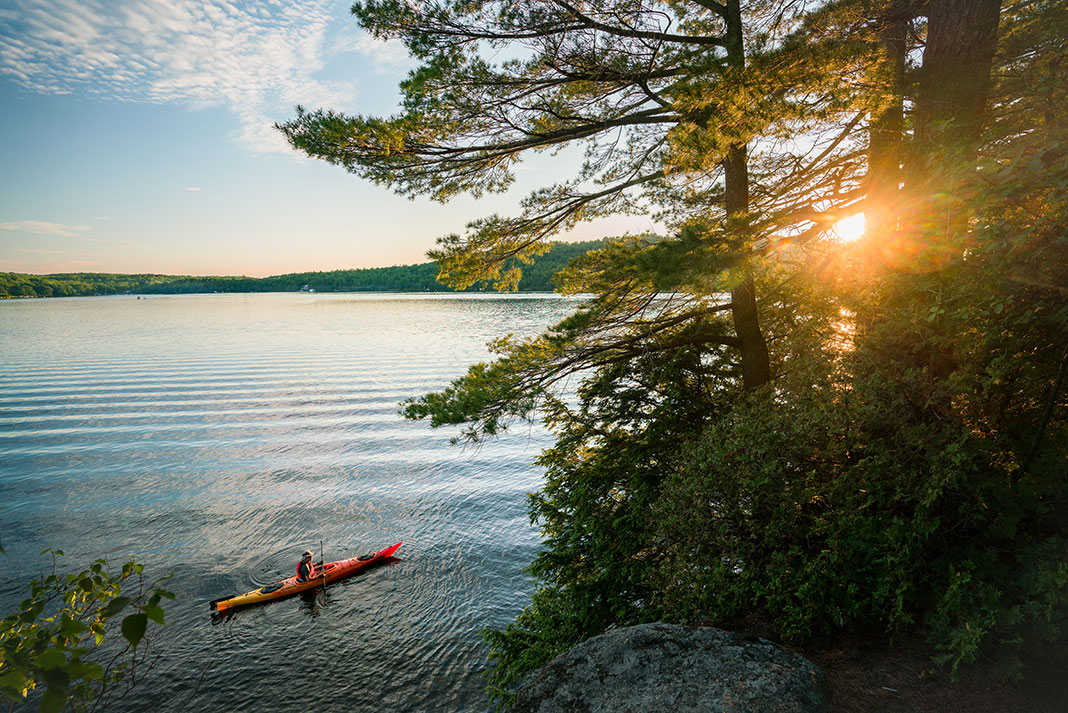Products You May Like
I beach my kayak at a paddle-in campground. A fee box wants $12 to camp on a not-quite-flat spot with no access to drinking water. Next to the box is a garbage can overflowing with trash. The vault toilet, equally overflowing with aroma, has no toilet paper or hand sanitizer. I walk back to my kayak for my wallet and TP, muttering that we kayakers should have listened to Arthur Cecil Pigou. How we pay for paddling—and yes, we pay—is broken. Let’s fix it.
It’s time to change how we pay for paddling
Pigou was a climber, not a kayaker, about a hundred years ago. And he was an economist. If we want to keep kayaking, we need to get to know the guy.
Kayakers think of paddling expenses as kayaks, drysuits, carbon fiber paddles and plane fares to tropical getaways. But my glove compartment holds five passes for different park districts, boat ramps and national forests. We also shell out for access, permits and camping, not to mention programs to keep water clean and restore habitat. And we’ve been paying more for less for a long time. Oregon just jacked up its camping fees at state parks to a whopping $42.
Costs rise, but management funding has failed to roll up, down 16 percent in real terms in the past two decades. The deluge of outdoor recreation during the pandemic magnified the crisis. My home state grew from 2.8 million people when I first slid into a Perception Dancer to 4.2 million today. During those decades, we’ve opened just two new state parks.
User fees are based on the principle of “user benefits, so user pays.” That makes sense on paper but fails in reality. User fees account for just 11 percent of site management budgets, with maintenance backlogs as long as a thousand surfskis laid end to end, as of 2019. And the more you raise user fees, the bigger barrier you create to participation—price folks out, and they’ll stop coming.
“User fees cannot fund agencies struggling to keep up with operations, let alone add additional recreation infrastructure to meet growing populations and increased demand for outdoor recreation,” the Outdoor Industry Association noted in 2017.
The right disincentives can promote more positive behavior
Back when Pigou was climbing in the Lake District and teaching economics at Cambridge after World War I, he devised tax structures to tax things we don’t want, like smoking, burning carbon, water pollution, instead of things that are good for society, like income, employment, property and outdoor recreation. Pigouvian taxes put the money into offsetting those negative impacts, like health care or environmental restoration. As the higher cost of cigarettes leads folks to ditch the habit, less money for smoking cessation won’t be a big deal.
What we’re doing with paddling right now is the opposite. Paddling is a human-powered, low-carbon activity and builds an environmental stewardship ethic. Instead of jacking up the price on camping and still not having the bucks for toilet paper, we should tax what we want less of and use those funds to repair our outdoor recreation sites.
What would a Pigouvian setup to support kayaking look like? How about a hefty tax on two-stroke motors, which dump half their fuel into the water unburnt? And another on disposable plastic bottles turning the sea into an endocrine disrupter goo? I bet Arthur Cecil would be into that.
Neil Schulman writes, kayaks, photographs and does conservation work in Oregon, where outdoor recreation is (under)funded by the state lottery.
This article was first published in the Early Summer 2022 issue of Paddling Magazine. Subscribe to Paddling Magazine’s print and digital editions, or browse the archives.
The only constants in life are death and taxes—and kayaking. | Feature photo: Nicholas Spooner
